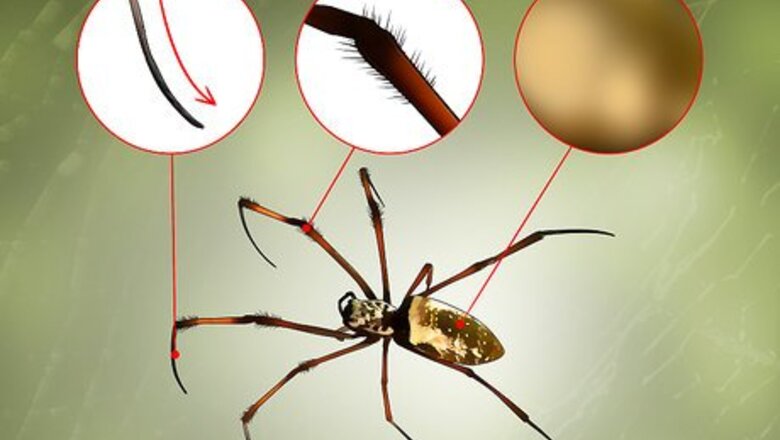
views
Identifying Golden Orb-Weavers
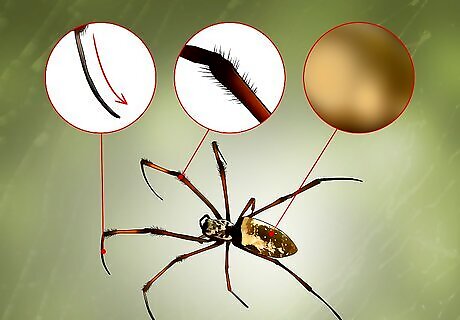
Note their color. These spiders usually have red, yellow, or white abdomens contrasted against black or dark brown. Their legs are often striped, have feathery tufts, and the tips of their legs point inward.
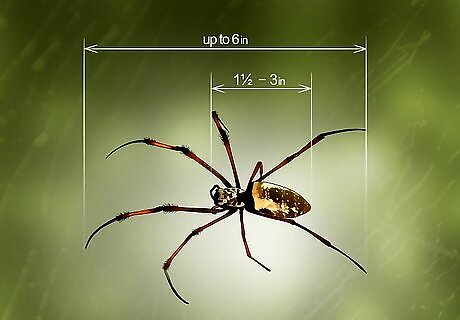
Know their size. The body of a female golden orb-weaver can be between one-and-a-half and three inches, while males are typically smaller than one inch. Their bodies are longer than they are wide, and they can have a leg span of up to six inches.
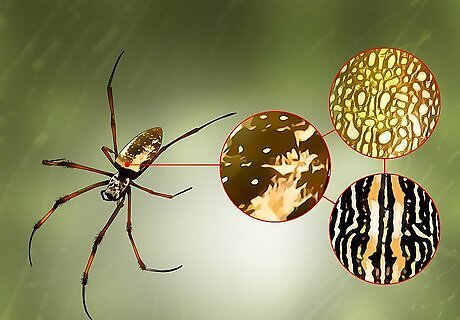
Recognize notable characteristics. Golden orb-weavers usually have irregular spots on their abdomens.
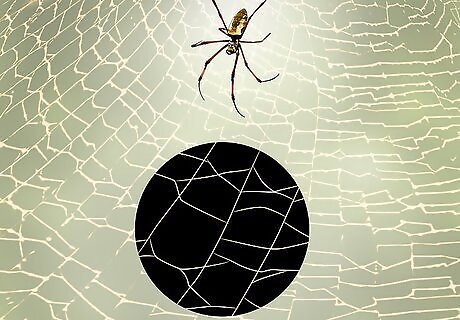
Recognize their webs. The webs of these spiders can be easily identified because of the yellow or golden color of the silk, which is why they are called golden orb-weavers. The webs can be larger than a yard across, and are generally found at eye level or above, and usually in forested areas or mangroves.
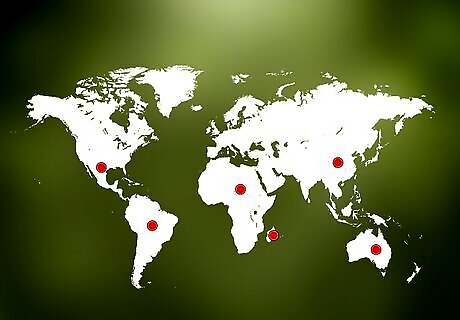
Learn where golden orb-weavers live. Spiders of the Nephila genus are commonly called golden orb-weavers, giant wood spiders, and banana spiders. While these spiders are mildly venomous, they aren’t a big threat to humans, as their venom isn’t overly potent. The species that make up this genus can be found in most places throughout the world, including: Australia Asia Africa and Madagascar South America North America (in the southern United States)
Identifying the Cupiennius Genus
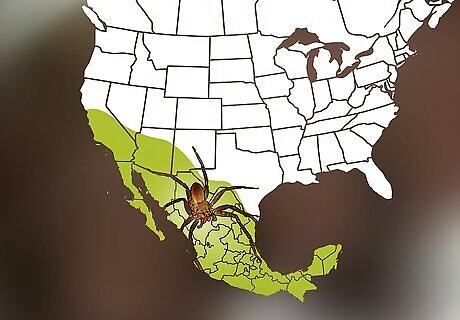
Learn where Cupiennius spiders live. Cupiennius spiders are called banana spiders because they are sometimes found in banana shipments in North America and Europe. However, they are only native to Mexico, the northwestern parts of South America, and a few Caribbean islands. While these spiders are not dangerous to humans, they are often mistaken for the venomous Phoneutria, or Brazilian wandering, spiders.
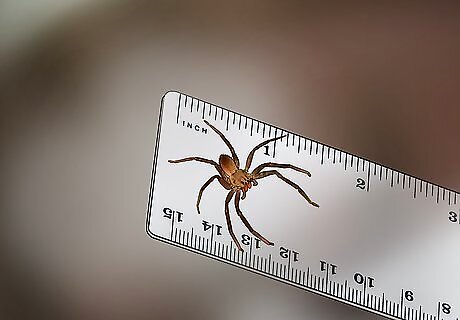
Know their size. The smallest spider species in this genus are about a quarter-inch, while females of the larger species can be as large and one-and-a-half inches. While often mistaken for Brazilian wandering spiders, Cupiennius spiders are generally smaller.
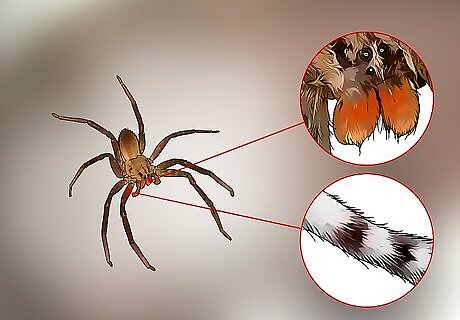
Note their color and identifying characteristics. Cupiennius spiders may have bright red hairs on their legs or mouths, and may have black spots on a white background on the underside of their legs near the body.
Identifying Brazilian Wandering Spiders
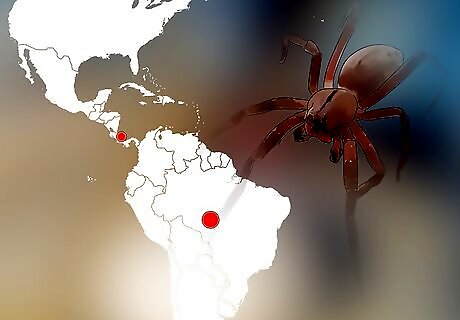
Learn where Brazilian wandering spiders live. Spiders of the Phoneutria genus are commonly known as Brazilian wandering spiders, armed spiders, or banana spiders. They are native to tropical areas in South America, but there has also been one species found living in Central America. Like Cupiennius spiders, Brazilian wandering spiders are often referred to as banana spiders because they sometimes travel the globe in banana shipments. Brazilian wandering spiders are a danger to humans, and are known as one of the most venomous spiders on Earth. However, there is anti-venom to treat their bites.
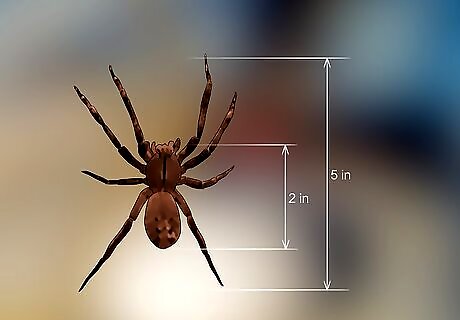
Know their size. Spiders in the Phoneutria genus can have bodies as large as two inches, and leg spans of up to five inches.
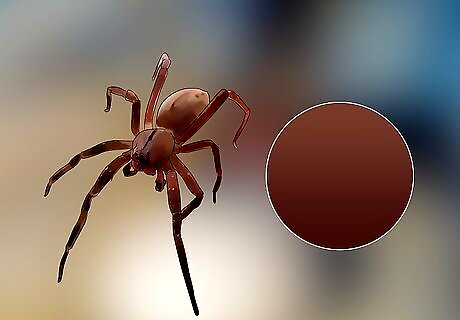
Note their color. These spiders tend to be brown and hairy. They are often confused with Cupiennius spiders because they too can have red hairs on their mouths, but they also might have a black spot on their bellies.
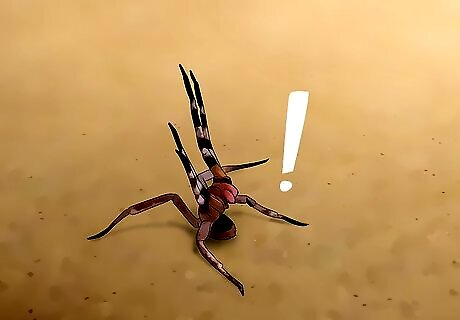
Recognize notable characteristics. Brazilian wandering spiders will often sit with their two front legs lifted in the air and sway from side to side.
Identifying Hawaiian Garden Spiders
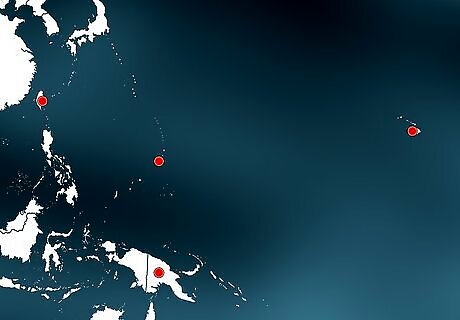
Learn where Hawaiian garden spiders live. Argiope appensa are commonly known as Hawaiian garden spiders. They are native to Taiwan and Guam, and are now found regularly in Hawaii and New Guinea. They are not venomous, and don’t pose any real threat to humans.
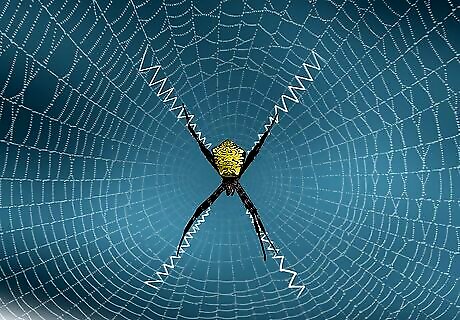
Recognize their webs. Hawaiian garden spiders have distinctive webs, thanks to the unique zigzag pattern they incorporate into their webs with thick bands of silk.
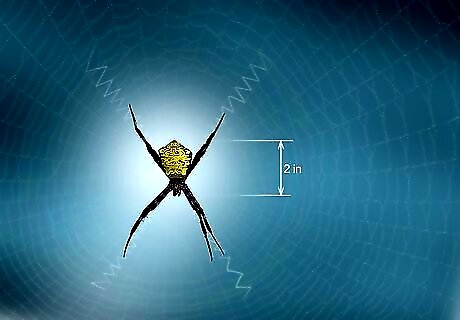
Know their size. These spiders can be quite large, with body lengths reaching over two inches.
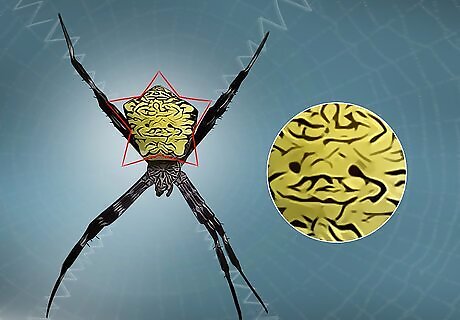
Note their color and identifying characteristics. Hawaiian garden spiders are often called banana spiders because of their yellow color. They can also be identified by their unique star-shaped abdomens.

















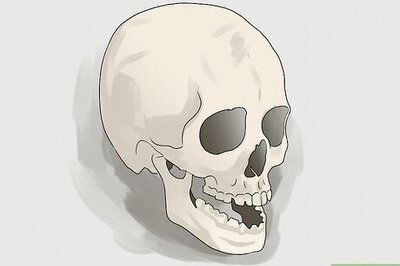
Comments
0 comment